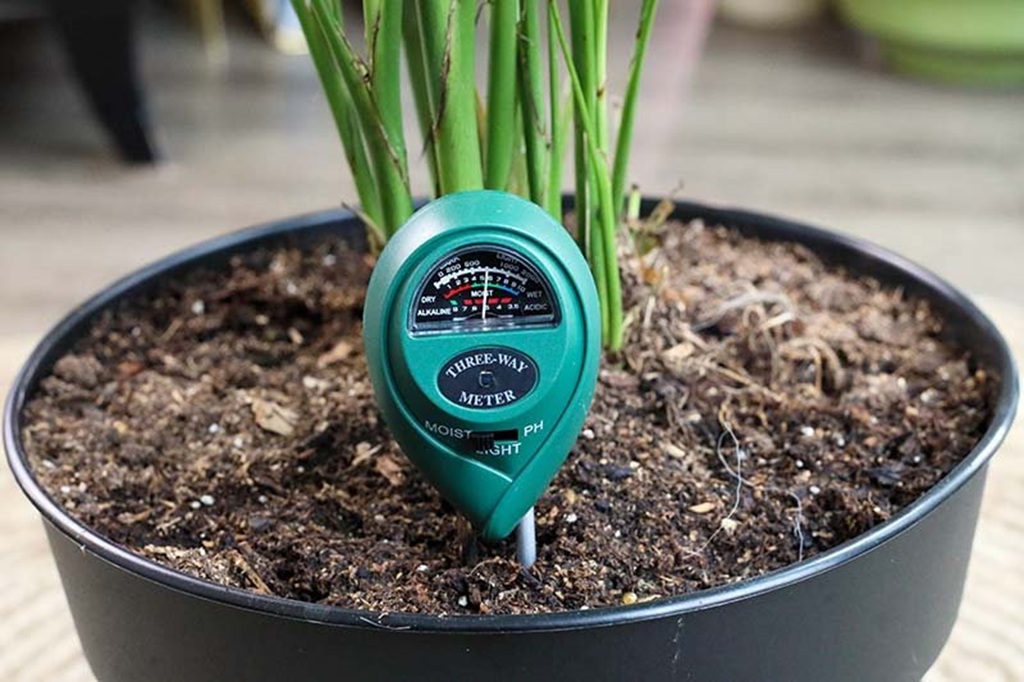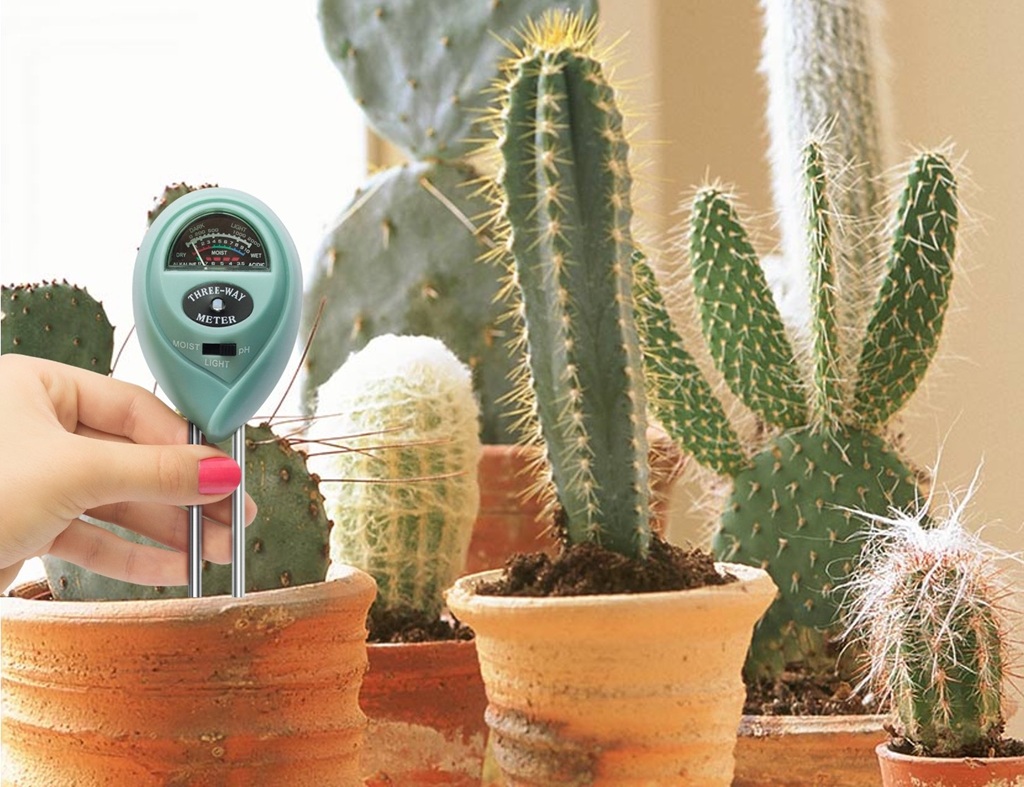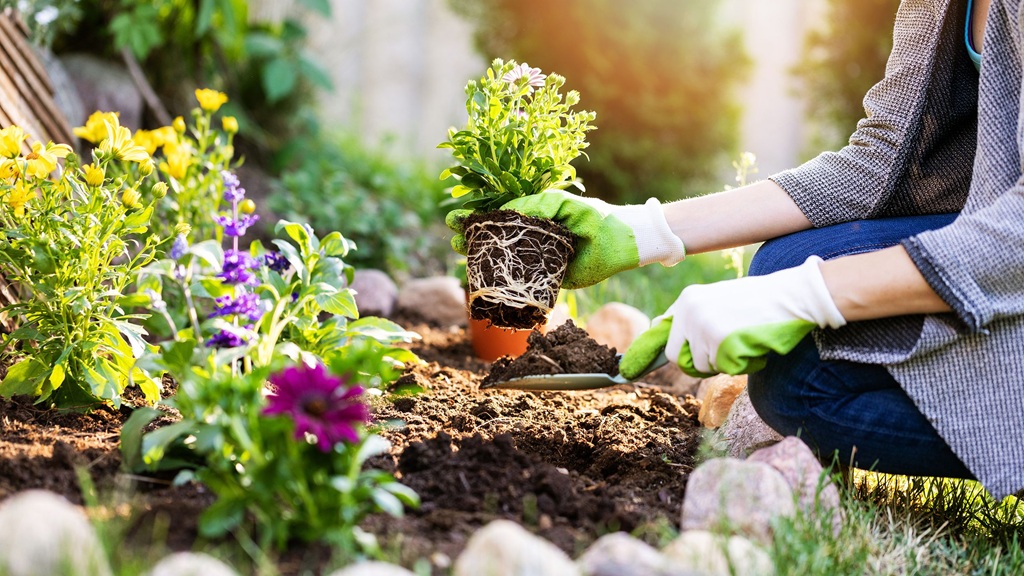Stepping into your garden, you’re greeted by a symphony of colors – the vibrant reds of your tomatoes, the sunny yellows of your sunflowers, and the lush greens of your herbs. But beneath this picturesque scene lies a hidden world of intricate balances, where moisture and pH levels play a crucial role in dictating the health and vibrancy of your plants.
Just as we need a balanced diet and optimal hydration to thrive, so do our plants. They rely on the right amount of water and the correct soil pH to access essential nutrients. Too much or too little water can suffocate roots or leave them parched, while an imbalanced pH can lock out vital nutrients, leaving your plants struggling to survive.
This is where the humble moisture and pH meter steps in, transforming from a simple gardening tool to a window into your plants’ well-being. It empowers you to move beyond guesswork and cultivate a garden that flourishes with health and vitality.
Why Moisture and pH Matter: The Foundation of Plant Health
Imagine trying to build a house on shaky ground. No matter how strong the structure, it’s bound to falter. Similarly, optimal moisture and pH levels form the bedrock of a thriving garden.
Moisture: Water is the lifeblood of your plants, transporting essential nutrients from the soil to their leaves and stems. However, maintaining the perfect moisture balance is a delicate dance. Overwatering can lead to root rot, fungal diseases, and a suffocating environment for roots. On the other hand, underwatering can leave your plants wilting and struggling to photosynthesize.
pH: This measure of acidity or alkalinity in the soil dictates nutrient availability. Most plants thrive in a slightly acidic to neutral pH range (6.0 to 7.0). Outside this range, essential nutrients like nitrogen, phosphorus, and potassium become locked, rendering them inaccessible to your plants. This can lead to stunted growth, yellowing leaves, and overall poor health.
Deciphering the Moisture and pH Meter: Your Gardening Ally
A moisture and pH meter is a compact, user-friendly tool designed to provide instant insights into your soil conditions. It typically consists of two probes: one for measuring moisture levels and the other for gauging pH.
Moisture Meter: This probe measures the volumetric water content in the soil, giving you a clear picture of how much water is available to your plants. Readings are usually displayed on an analog scale or a digital display, often categorized into dry, moist, and wet zones.
pH Meter: This probe assesses the acidity or alkalinity of your soil. It measures the concentration of hydrogen ions, providing a numerical value on the pH scale. A reading of 7.0 indicates neutral soil, lower values indicate acidity, and higher values indicate alkalinity.
Choosing the Right Meter: A Buyer’s Guide
Navigating the world of moisture and pH meters can feel overwhelming with the array of options available. Here’s a breakdown to help you make an informed decision:
Analog vs. Digital: Analog meters are simple and affordable, relying on a needle to indicate readings. Digital meters offer greater precision and often include additional features like backlights and temperature readings.
Probe Length: Consider the depth of your plant’s root systems. Longer probes are suitable for larger plants with deeper roots, while shorter probes are sufficient for smaller plants and seedlings.
Durability and Water Resistance: Opt for a meter with sturdy construction and water resistance, especially if you plan to use it frequently in various weather conditions.
Additional Features: Some meters offer extra functionalities like fertility testing or light measurement. Consider your specific needs and gardening goals when evaluating these features.
Reviews: Top-Rated Moisture and pH Meters
To further assist you in your selection, here are reviews of some highly-rated moisture and pH meters:
- XLUX Soil Moisture Meter: This affordable analog meter boasts a simple design and reliable performance. Its long probe makes it suitable for a variety of plants, and its color-coded readings offer quick and easy interpretation.
- Sonkir Soil pH Meter: This digital meter provides accurate pH and moisture readings, along with sunlight intensity and temperature measurements. Its large backlit LCD screen ensures clear visibility, even in low-light conditions.
- Dr. Meter S10 Soil Moisture Sensor: This compact and durable meter offers precise moisture readings without the need for batteries. Its minimalist design and ease of use make it a favorite among both novice and experienced gardeners.
- Bluelab PENPH pH Pen: This professional-grade pH pen offers laboratory-level accuracy and is ideal for serious gardeners and hydroponic growers. Its automatic temperature compensation ensures precise readings in varying environments.
- Luster Leaf 1840 Rapitest Digital Soil Tester: This comprehensive tester combines pH, moisture, and fertility readings in one device. Its easy-to-use interface and detailed instructions make it a valuable tool for understanding your soil’s overall health.
Remember, the best meter for you will depend on your budget, gardening needs, and personal preferences.
Maximizing Garden Health: Putting Your Meter to Work
Equipped with your chosen moisture and pH meter, you’re ready to unlock the secrets to a thriving garden. Here’s how to put it to work:
- Testing Moisture: Insert the moisture probe into the soil, ensuring it reaches the root zone of your plant. Take readings at various points around the plant to get a comprehensive picture of moisture distribution. Adjust your watering schedule accordingly, ensuring the soil is neither waterlogged nor bone dry.
- Testing pH: Insert the pH probe into the soil, following the manufacturer’s instructions. Compare the reading to the ideal pH range for your specific plants. If necessary, amend the soil with lime to raise pH or sulfur to lower it.
- Regular Monitoring: Make moisture and pH testing a regular part of your gardening routine. This allows you to proactively address any imbalances before they impact your plants’ health.
- Interpreting Results: Remember that moisture and pH readings are just one piece of the puzzle. Consider other factors like plant type, weather conditions, and soil type when interpreting results and making gardening decisions.
Beyond the Basics: Advanced Techniques
As you gain confidence with your moisture and pH meter, you can explore more advanced techniques to further optimize your garden’s health:
- Mapping Moisture Zones: Create a moisture map of your garden by taking readings at various locations. This can help you identify areas prone to dryness or waterlogging, allowing you to tailor your watering strategy accordingly.
- pH Profiling: Test the pH of different soil layers to gain a deeper understanding of your soil profile. This can reveal potential nutrient deficiencies or imbalances at different depths.
- Container Gardening: Moisture and pH meters are particularly valuable for container gardening, where soil conditions can fluctuate more rapidly. Regular monitoring helps ensure your potted plants receive the optimal care they need.
- Troubleshooting Plant Problems: When faced with plant health issues, use your meter to rule out moisture and pH imbalances as potential causes. This can help you narrow down the problem and implement targeted solutions.
Related: Unearthing Secrets: 10 Little-Known Gardening Tips You Must Know
Frequently Asked Questions (FAQ)
-
How often should I test moisture and pH?
The frequency of testing depends on factors like plant type, weather conditions, and soil type. As a general guideline, test moisture every 1-2 weeks and pH every 2-3 months. However, more frequent testing may be necessary during periods of extreme weather or for plants with specific needs.
-
How do I calibrate my moisture and pH meter?
Calibration procedures vary depending on the meter model. Refer to the manufacturer’s instructions for specific guidance. Generally, pH meters require calibration using buffer solutions, while moisture meters may require adjustments based on soil type.
-
Can I use the same meter for different types of plants?
Yes, you can use the same meter for different plants. However, remember that ideal moisture and pH levels vary between species. Adjust your watering and soil amendment practices accordingly based on the specific needs of each plant.
-
What are some signs of moisture and pH imbalances in plants?
Moisture imbalances:
- Overwatering: Wilting, yellowing leaves, stunted growth, root rot, fungal diseases.
- Underwatering: Wilting, dry leaves, leaf drop, slow growth.
pH imbalances:
- Nutrient deficiencies: Yellowing leaves, stunted growth, leaf discoloration, poor flowering or fruiting.
- Toxicity: Leaf burn, root damage, plant death.
-
Where can I purchase a moisture and pH meter?
Moisture and pH meters are readily available at garden centers, home improvement stores, and online retailers. Consider factors like budget, features, and user reviews when making your selection.
Related: Does Peat Moss Lower pH?
Cultivating a Flourishing Garden: Your Journey Begins
A moisture and pH meter is more than just a tool; it’s an investment in your garden’s health and your own gardening journey. By understanding and responding to your plant’s needs, you’ll create a thriving ecosystem where vibrant colors, fragrant blooms, and bountiful harvests abound.
Remember, gardening is a continuous learning process. Embrace the journey, experiment with your newfound knowledge, and watch as your garden transforms into a testament to your care and dedication.






